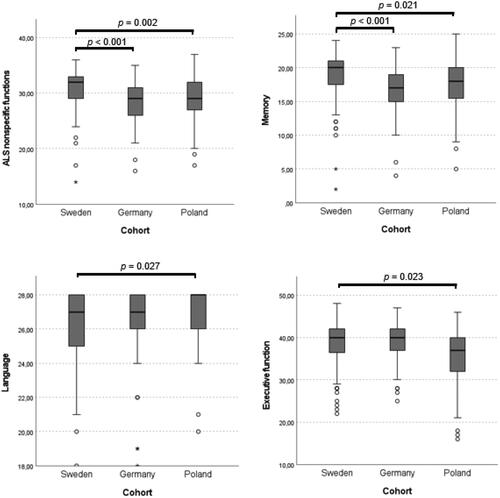Figures & data
Table 1 Performance on the ECAS and age- and education-adjusted cut-offs of the German language cohort (as previously reported by Loose et al. (Citation19)).
Table 2 Changes made to the ECAS to adapt to the Polish and Swedish cultures and languages.
Table 3 Cut-offs for the Swedish ECAS for the total cohort and stratified for age and education.
Table 4 Cutoffs for the Polish ECAS for the total cohort and stratified for age and education.
Table 5 Overview of cut-offs for different national versions of ECAS.

